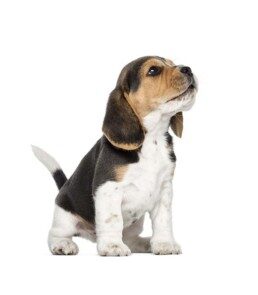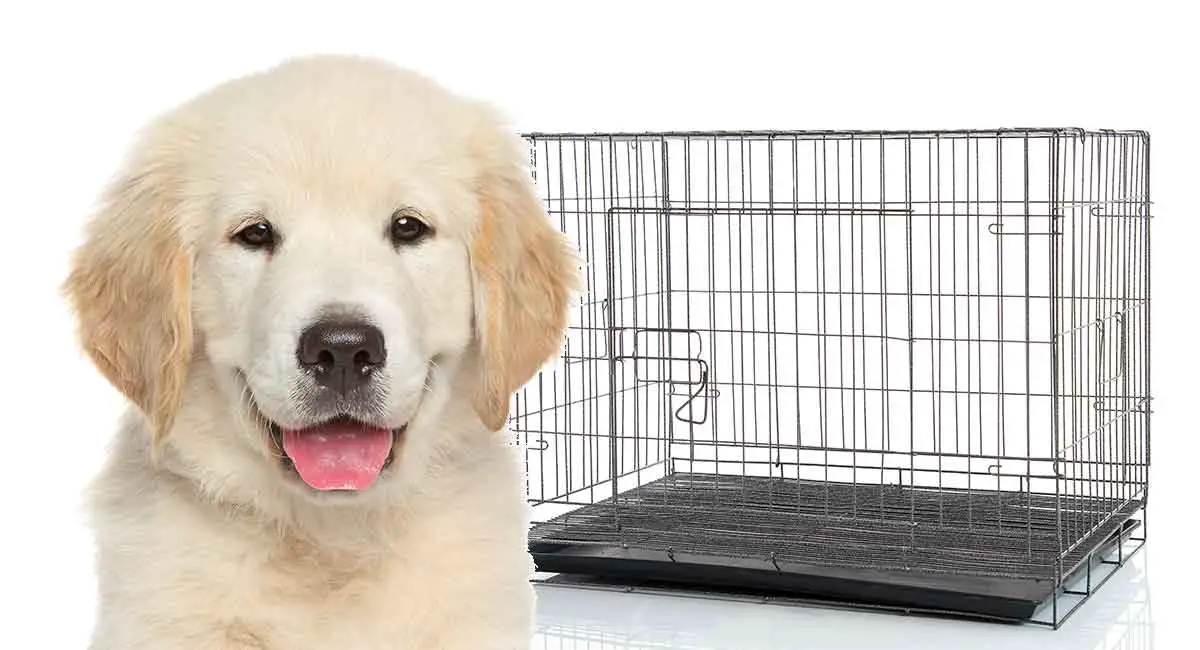Puppy Keeps Peeing In Crate?, Reasons why your dog urinates in his crate.
If your dog is urinating in the crate, this can be for several reasons. Young or old it can happen to every dog that he pees in the crate. Below you can read some examples of what can underlie your dog urinating in the crate.
Young dog
When you have a puppy, the pee in the crate is included. A young dog needs toilet training to learn to do his business outside. Toilet training your puppy is an essential part of educating your dog.
Fear of abandonment
When your dog suffers from separation anxiety, he may urinate in the crate. Walking and plenty of exercises If your dog is not or not walked long enough before he is in the crate, he can do his needs in the container.
Every dog needs plenty of exercises. When your dog has to walk for a long time before he is in the crate and lets him run well, he will get tired. After such a pleasant walk, your dog can sleep well in his dog crate.
Too much water
Of course, there must be water and, if necessary, dog food in the crate. Could it be that there is too much water in your dog’s water bowl? Everything your dog drinks needs to be peed out again.
Eat too salty
If your dog eats salty food before he is in the crate or when he is alone in the crate, he will also have to drink more.
Medical
There may be a medical cause for your dog to urinate frequently. You can think of cystitis, for example.
Does the problem not solve?
Have you tried everything yourself and the problem does not solve? Then it may be wise to get help from the vet or perhaps a dog behaviour therapist.
Toilet training a puppy
Of course, it is helpful if your puppy is toilet trained as soon as possible. You, as the owner, have an essential role in the toilet training of your dog. Here are some tips for housebreaking your dog as soon as possible.

The first nights your puppy is in your house can be very hard. He misses the warmth and security of his brothers and sisters in the nest.
It is recommended to bring your dog upstairs on the first nights. Place it in its crate next to your bed. You can then quickly put it outside at night to make it pee and/or defecate. Most puppies cannot sleep through the night. An additional advantage of using a crate is that you can put your fingers through the bars to give the dog a sign of company.
You are guaranteed to be faced with the following choice when your pup starts to beep at night:
- Is my puppy beeping for attention?
- Is my puppy beeping because he needs to defecate?
Whatever the reason, let your puppy out, especially the first nights when he beeps. You will find out soon enough whether your pup squeaks because he needs to defecate or because he wants attention. If your pup has defecated and is still beeping, ignore this. You will notice that he quickly becomes silent.
Prevent squeaky pup
You can prevent the beeping by setting your alarm clock in time. This prevents your pup from learning that it will be removed from the crate by squeaking. For example, if the dog is able to hold his pee until about 3 am, set your alarm at 2:30 am. In the beginning, it is wise to sound the alarm again at 6 am so that you can be sure that the puppy does not wake up screaming.
The big advantage of this is that the dog (and probably you too) falls asleep quickly and quietly because he has not awakened from his own screams.
Jug for your puppy
Some puppies like to lie against a jug. It is best to make a jug from a hard plastic lemonade bottle. You fill this with warm/lukewarm water and wrap the bottle in a pillowcase. A soft jar is not recommended because it usually contains a gel that is poisonous. Do not give your puppy a drink after 9 pm. This allows the dog to hold his pee better at night.
If your pup squeaks less at night, you can leave the crate with your dog down. This is usually possible after a few nights. Just make sure you can hear your pup. You will still have to get out if he has to pee or defecate. Do this without any obligations or attention.
Do not hug the dog extensively. Most puppies can sleep through the night between the ages of 8-12 weeks. However, it also happens that this can only be done later.

Place to sleep
If the dog squeaks less at night, the crate with the puppy can be down again.
Toilet training
During the day outside the crate
When your pup is outside the crate during the day and walks around the room, you should pay close attention to him. The temptation is very great for the dog to quietly deposit his feces in a corner of the room.
After all, he doesn’t know any better. If you see your pup scratching around sniffing or dribbling up and down nervously, chances are he will need to defecate. By bringing the dog to the ‘right’ place in time, the dog learns where to defecate.

Toilet training
Toilet training is aimed at preventing defecation in the wrong place. Bring your dog to the right place in time and the dog will learn where to defecate.
How often should a puppy urinate and defecate?
From the moment you have the puppy in your house, do your best to housebreak it. After each activity (such as training, playing, eating, etc.) the puppy will have to defecate. It is therefore important to put the puppy outside immediately after an activity.
The puppy will have to urinate 5 to 10 minutes after drinking. Certainly in the beginning it may happen that the dog has to defecate shortly before eating, but also shortly after eating.

Drink
Do not give the puppy a drink after 9 p.m. This helps prevent nighttime outings.
Relieve on command
An important part of toilet training is to slowly build up the period when the puppy can hold up his stool.
You will have to spend a lot of time outdoors for the first few months as you will have to wait until your pup has urinated or defecated. If you want to work more efficiently, you can choose to teach your dog to pee and defecate on command.
It is reasonably predictable when he ‘must’, namely after he has been taken out of the crate, after drinking a lot and after playing. And you can influence that.
How does this work:
Decide which command you want to teach your dog to defecate. When you have determined which command it will be (note that this is a command that you will also use in public!), Then you are ready to start.
Leash your puppy every time you take your puppy outside. This ensures that you have control over him and that he has to focus on his important task.
- Go to his regular stool.
- Let the puppy do its business here.
- When you see that he is going to pee (or poop), immediately give the command that you have determined before.
- When the dog is ready, immediately give him a treat to reward him.
This training is extra useful for when it is raining and cold or when you are short on time. You also prevent the dog from relieving in a place where you prefer not to have it (in the middle of a busy street or something similar).
What if your dog has urinated or defecated inside?
If your pup has urinated or defecated indoors, without you being there, it is best to clean up his pee or poo immediately. Ignore the dog, because your dog should not learn that a lot of attention is given to him when he has defecated inside. If you are an eyewitness to the accident, quickly pick up the puppy and bring it outside.
The puppy will automatically stop urinating (or defecating) when you pick it up. If he continues to urinate or defecate outside, reward him. Don’t forget to clean up the mess immediately when you go back inside!
Your pup doesn’t need to see you clear the feces. Do not frighten your puppy by running towards him threateningly and screaming, as the result may be that the puppy no longer dares to defecate when you are around.
This seems to be a handy solution for indoors, but the result may be that the puppy will defecate in sneaky places. Or even more annoying: your puppy no longer dares to defecate in your presence.
Humble puddles
Some puppies run their pee when they are greeted. This is a normal expression of submission that they often grow over. These humble puddles have nothing to do with uncleanliness. It is a means of communication of the dog with which he tries to indicate that you are higher in rank.
This sometimes happens with puppies and dogs that get very excited when people come in. To get rid of this quickly, it is best to ignore your puppy upon entering by not looking at him and making no physical contact.
Call your pup after a minute and pat it gently over its chest. Keep the contact short and prevent your puppy from passing his humble pee. Stay calm and try to avoid eye contact. You also make yourself less threatening by turning your body a little away from your pup and bending your knees.
Frustrations
Don’t despair when the puppy goes wrong a few times during this period. You will certainly hear stories of people who have house-trained ‘their pup’ within a few days. It is a fact that one puppy is toilet trained earlier than the other puppy. Do not use newspapers and / or other aids to let your dog defecate inside.
You only make the problem bigger. Don’t forget that potty awareness is an innate quality. Every dog has it. The following also applies to toilet training: if after a few months it turns out that the dog is not becoming toilet trained, please contact the veterinarian and / or a certified behavioral therapist.

